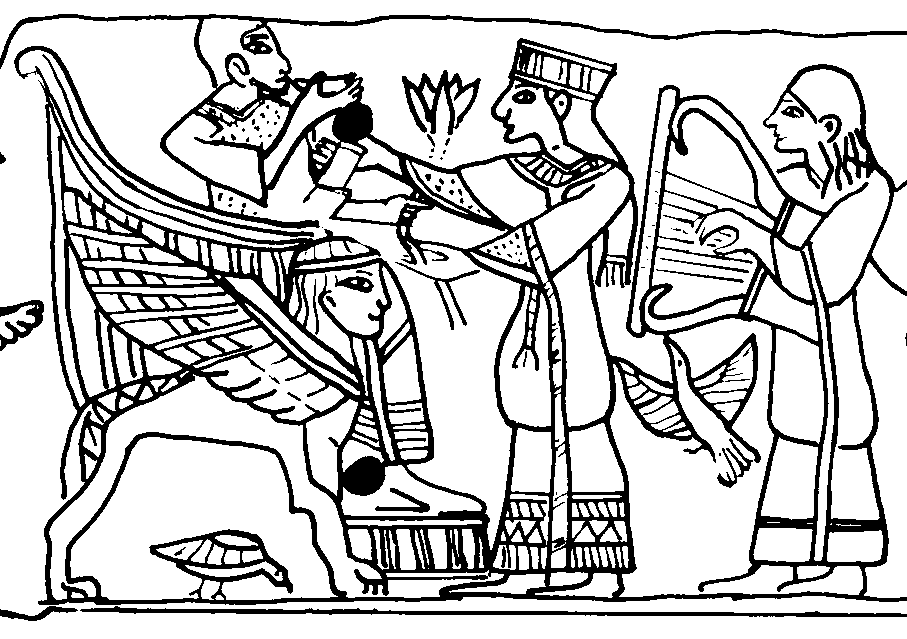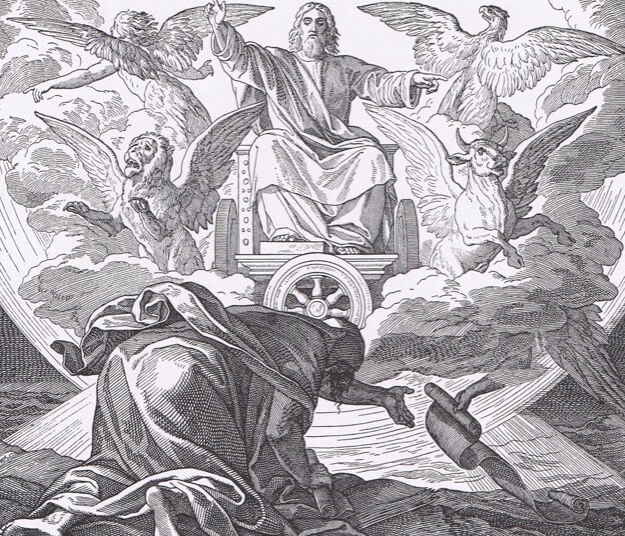WHAT ARE THE CHERUBIM?
THE CHERUBIM are one of several orders of angelic beings that we meet in the Bible. Others include the Seraphim, the Ofanim, and the Hayyot. But the cherubim, or more accurately keruvim, are more mysterious than most.
For a start, unlike the other orders of angels, we don’t really know what keruv means. Seraphim means “burning ones”. Ofanim means “wheels”. And hayyot means “living ones”. These are all good Hebrew words. But no-one is even really sure what language keruv is. The best guess is that it comes from an ancient Akkadian word for “bless”. If so, the keruv is a “blesser”. Then, in due course, the Hebrews borrowed this word. This means, of course, that the keruvim or cherubim were known among the peoples of the ancient east before the Israelites even became a nation.
SO WHAT WAS A CHERUB?
In fact, the cherub or keruv is a being well known to us from ancient eastern iconography. It was not a winged man. Nor was it a little flying putto or baby boy. It was, in fact, a being combining human characteristics with traits of fierce animals and birds. This hybrid creature seems to have represented a solar or stellar deity. The best-known example is the great man-headed lion the ancient Egyptians called Re-Hor-Akhty – ‘Ra-Horus of the two horizons’ – better known nowadays as the Great Sphinx of Giza. You can see his picture at the top of the page.
Actually, the Egyptians do not seem to have had a general name for these creatures. (‘Sphinx’ is a Greek word.) They seem just to have called them by the name of the deity they represented. But they had many of them, with and without wings. King Tut-ankh-amun’s throne, for instance, is upborne by winged sphinxes.

CHERUBIM IN THE EAST
The Assyrians, to Israel’s north-east, fashioned similar images. The entrance to the palace of King Ashurnasirpal II (883–859 BC) at Nimrud featured two colossal winged man-headed lions. They now stand proudly in the British Museum. But there were bull lamassu too. The palace of Sargon II in Khorsabad had two colossal man-headed bulls. They now stand in the Louvre (see picture). The ‘Ain Dara temple in northern Syria, which stood from about 1300 to 740 BC, also had man-headed, eagle-winged, bull-bodied lamassu on each side of the entrance. Further east, Persian sphinxes featured the head of King Darius upon a lion body. This was just in case anyone doubted: the king was also a stellar deity.
Back in the Holy Land, the king of 13th-century BC Megiddo sits on a throne supported on each side by lion-bodied lamassu: stellar deities to attend a heavenly king. His queen offers him a lotus blossom, the symbol of eternal life. A shapely concubine sings to him with the harp. Guinea fowl play at his feet. He sips his wine, unaware that the sword of Joshua is raised to cut him from his celestial throne.

ISRAELITE CHERUBIM
The Israelite keruv must have shared similarities with its ancient neighbours’ counterparts, but it had distinctive features of its own. The keruvim seen by Ezekiel, for instance, have the form of a man, with calves’ feet, human hands, four wings, and four faces; the faces are those of a man, a lion, a bull, and an eagle; or alternately, of a man, a lion, an eagle, and, yes, a keruv.

So it seems that Israelite craftsmen knew what keruvim looked like—even their faces. For they carved and embroidered their images in the desert Tabernacle and in Solomon’s Temple. But not one ancient image of an Israelite keruv survives to this day. Yet, like the Egyptian sphinxes or the Mesopotamian lamassu, Israel’s keruvim were guardian deities, manifestations of heavenly bodies, bestowing divine protection upon the king. Since Israel was so near to Canaan in every way, it is likely that the ancient Israelite keruvim looked a bit like the winged lions beside the Megiddo throne.
If you want to know more about the cherubim, you’ll find them in Chapter 5 of The Songs of Ascents.
